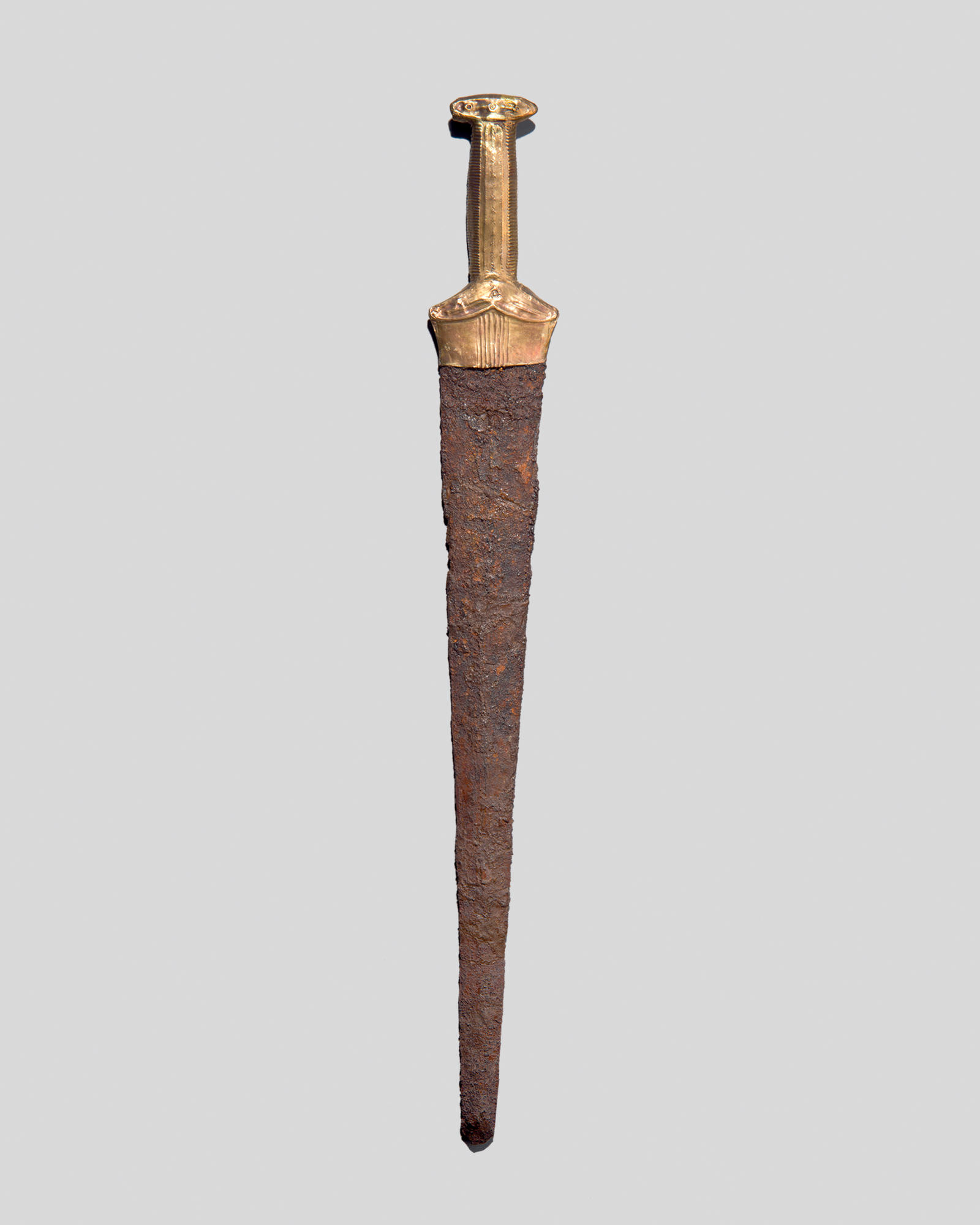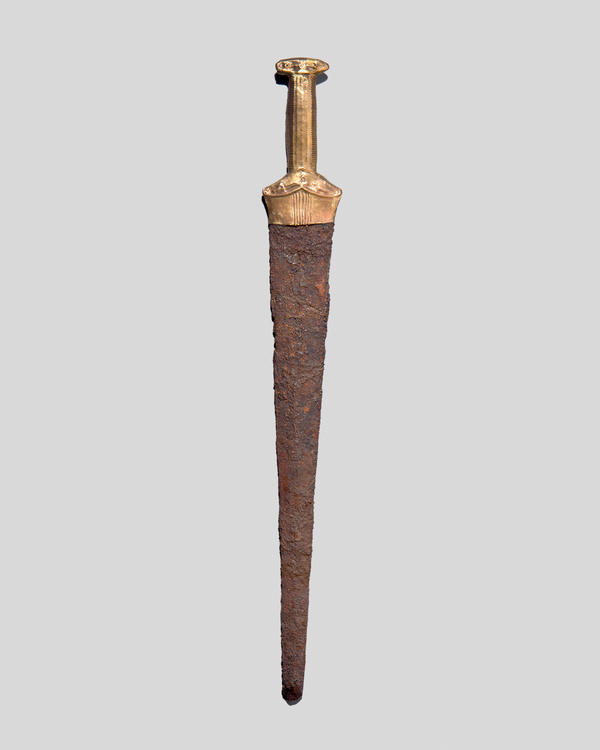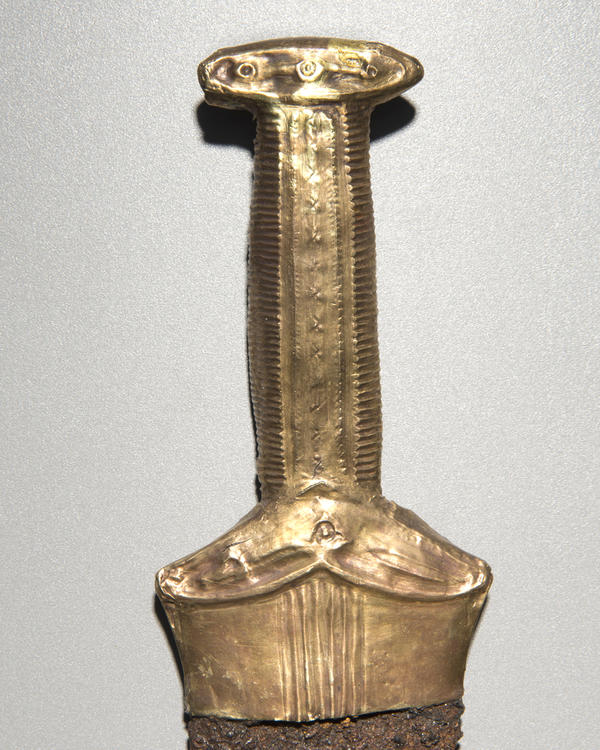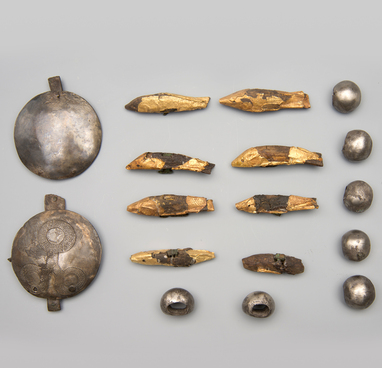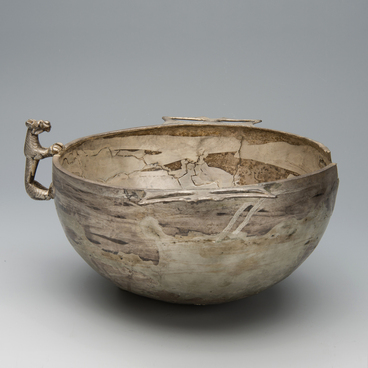Scythians raised cattle and led a nomadic lifestyle. However, men were primarily warriors, so they were buried with weapons.
Archaeologists found this iron sword in a burial mound near Vesely village in Rostov Region, among armor and weapons, in 1986. The hilt decorated with gold featured an animal’s head. The weapon was attached to a leather sword-belt embroidered with thin bronze plates. Scabbards for such swords were made of wood and covered with leather.
Archaeologists found this iron sword in a burial mound near Vesely village in Rostov Region, among armor and weapons, in 1986. The hilt decorated with gold featured an animal’s head. The weapon was attached to a leather sword-belt embroidered with thin bronze plates. Scabbards for such swords were made of wood and covered with leather.
